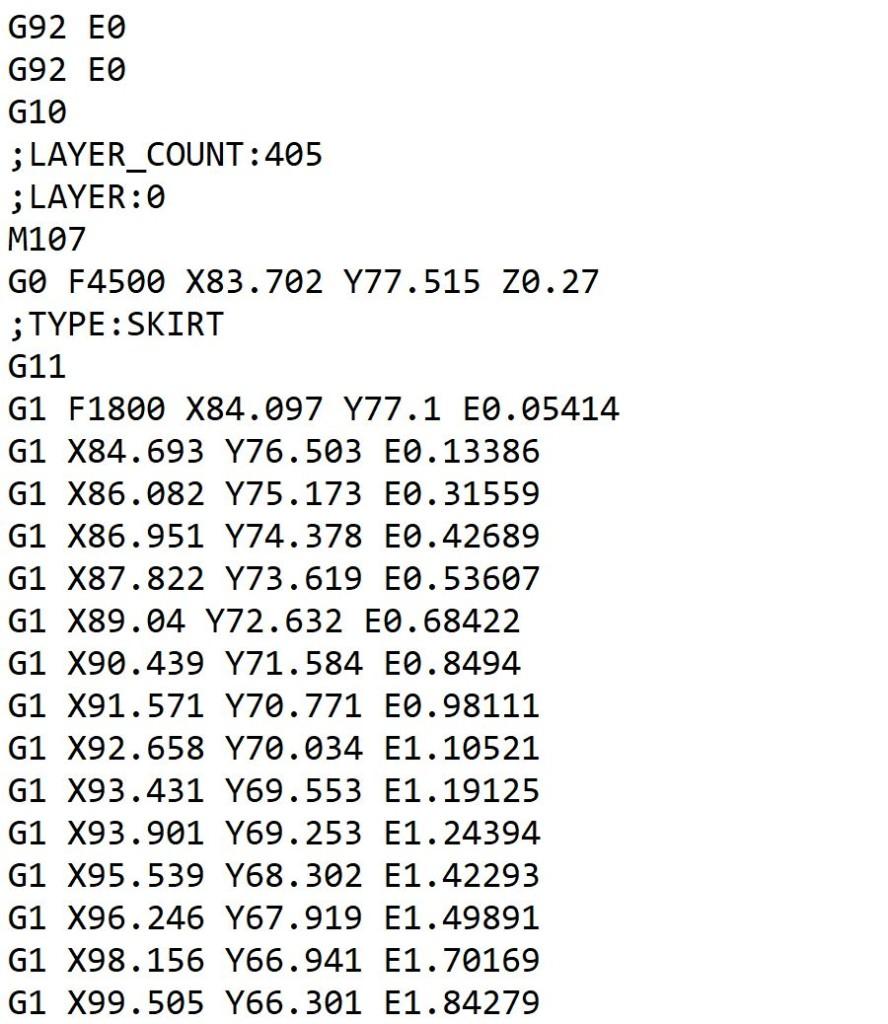|
Converting Your File Into G-Code
Goals
In this chapter, we will go through the process of slicing a 3D model in a slicing software called Cura and converting it into code that a 3D printer can read and execute.
What is G-Code?
Before printing, a mesh file needs to be translated into a language that the 3D printing machine can understand.
In computer-controlled automated machines, this is called a G-Code. This code contains a series of numerical operation commands that tell a machine the paths that the extruder or the laser should follow. Depending on the type of machine used, it will also include the amount of material extruded and the temperature of the extruder nozzle and the platform, among others. A typical G-Code will look like this:

With experience, you will be able to go into the code and modify it to your own requirements.
Article explaining G-Code in depth
Slicing your model
So, how is it possible to create this code? Thought inputting the exported STL file into a slicer software that creates it. Slicers will divide the object into a series of stacked layers.
Slicers designed for material extrusion (FDM or FFF) will allow you to modify the following features from your printing file:
-
- Infill
- Supports
- Adhesion layers
In addition, slicers have more advanced options where you can modify the printing quality (layer height), temperature, speed, sequence, seam location, and even special features like only printing the outer contour of the piece in a spiral-like motion.
Nowadays, there are many different open-source and free slicers. Certain machines at the workshop use a specific slicer provided by their manufacturing company. Most of the machines at the workshop use a slicer called Ultimaker Cura, developed by the Ultimaker manufacturer. You can download this free software on your own computer from this link:


